The presence of houseplant pests is challenging and unpleasant. Such as spider mites, fungus gnats, aphids, mealybugs, whiteflies, thrips, leaf miners, slugs, and snails infest indoor plants from nowhere and are abundantly present in interior spaces. Let’s discuss how to get rid of bugs in plants.
You thought you had applied the treatments, and now they are gone, but the pest problem appears again and damages the plants. Therefore, always watch your houseplant bugs to detect and control them early. The early detection of houseplant pests plays a crucial role in protecting prized indoor plants.
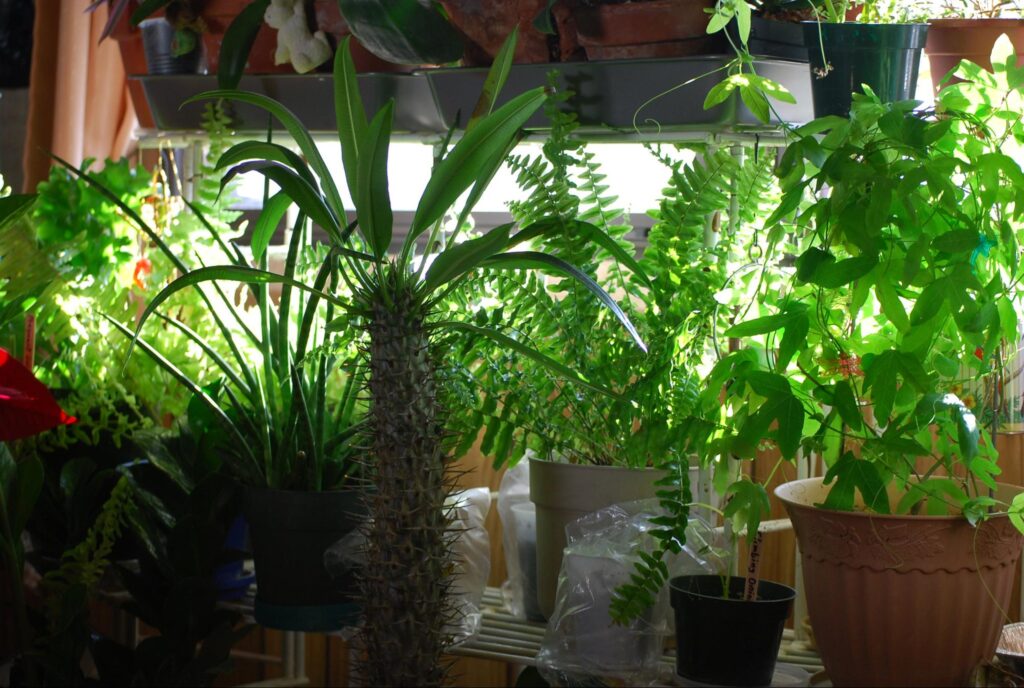
Healthy houseplants
What Are The Common Houseplant Pests?

Most common houseplant bugs
Houseplant bugs are after your plants. They feed on the indoor plant’s roots, foliage, and stems. These pests suck the life out of indoors and impact plant growth, vigor, and reproduction. However, the plant has developed various defense mechanisms to repel these alien and tiny creatures.
In addition to that, the houseplant owners can also manage the houseplant bugs through treatments—specified for them.
There are two types of houseplant bugs that cause damage to them. One is sucking insect pests—they suck plant juices through their piercing-sucking mouthparts (stylet). While the second is chewing insects that mainly munch on plant foliage.
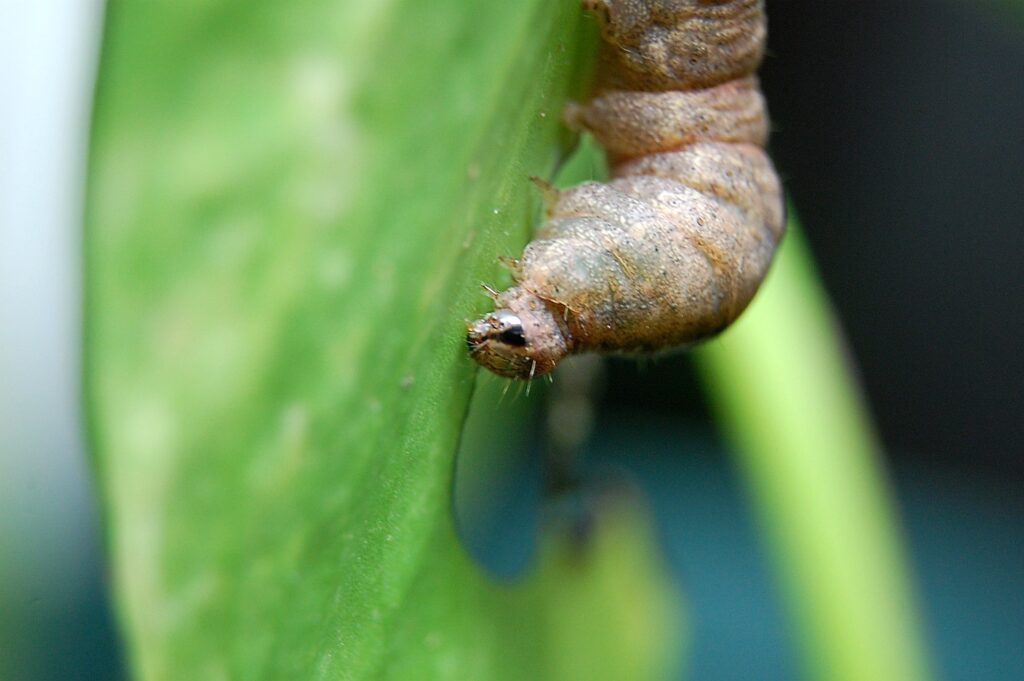
Lepidopterous caterpillar munching on host plant leaves
Sap-Sucking Plant Pests
Sap sucking insects are the most common indoor plant pests that suck out plant juices and multiply quickly. They suck out their host’s nutrients through a needle-like structure and go unnoticed because of their small size. However, much damage to houseplants has been caused when an infestation is noticed.
The sap-sucking indoor plant pests include:
- Whiteflies
- Aphids
- Thrips
- Spider mites
- Scale insects
- Mealybugs
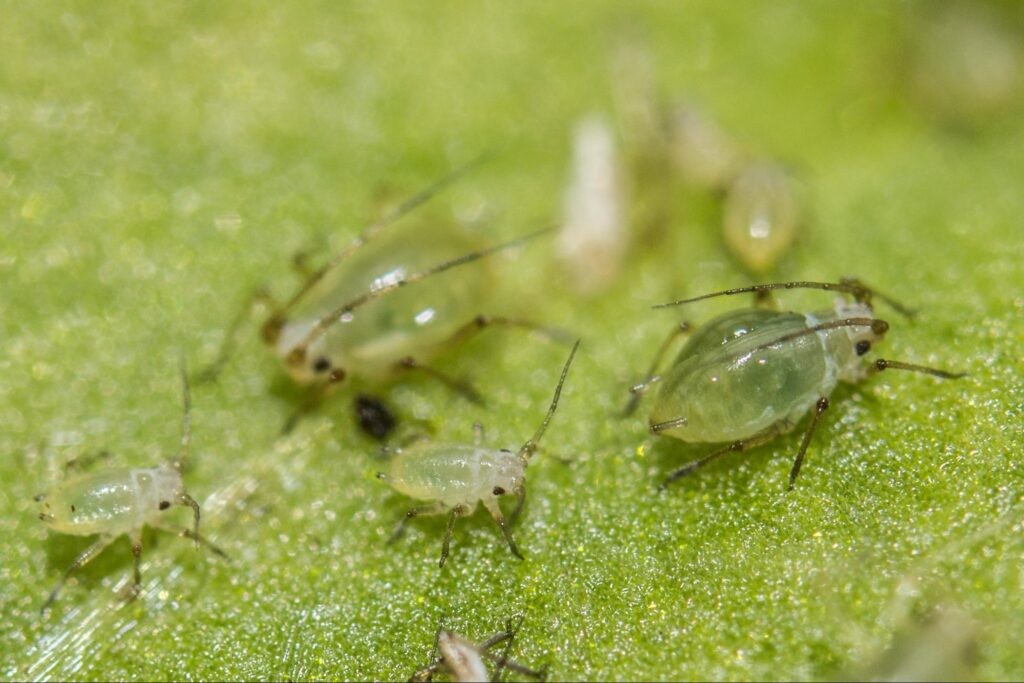
Aphids on a family trip plus feasting on their favorite host plants
Plant Eaters (Chewing Pests Of Indoor Plants)
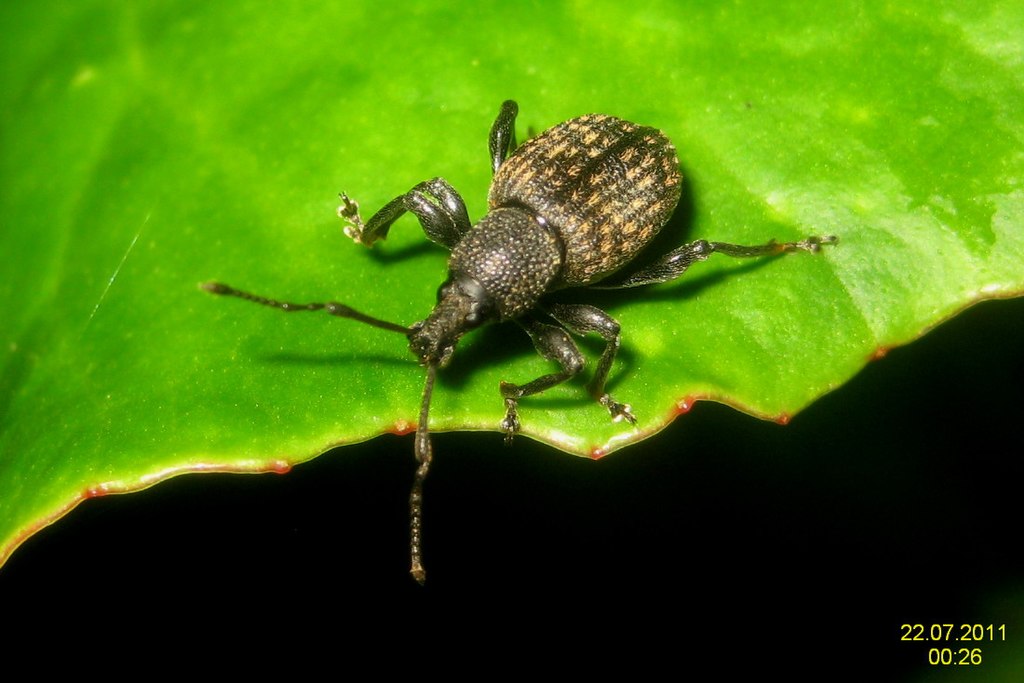
Black vine weevil—plant leaf eater
Unlike sucking plant pests, chewing insects are not a big problem for houseplants. However, they cause severe destruction in landscaping because the chewing caterpillars defoliate the outdoor plants. Therefore, the quick applications of insecticidal soap and neem oil spray are the best solutions to prevent chewing pests’ damage.
It includes:
- Caterpillars
- Slugs
- Black vine weevils
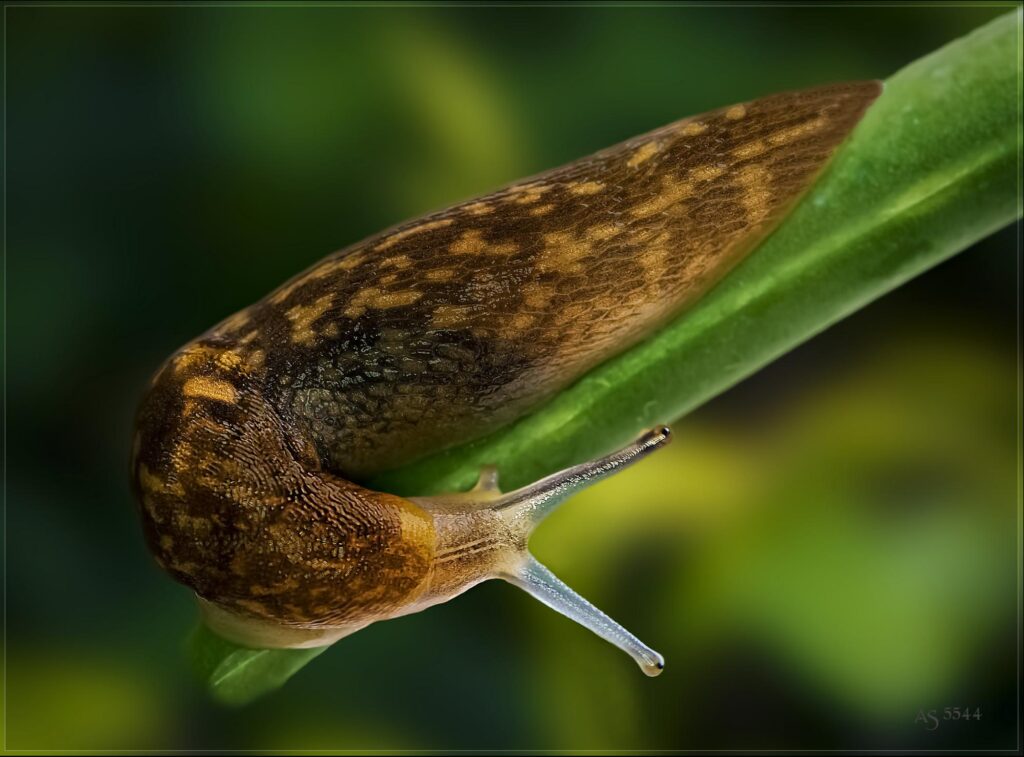
Plant foliage eater—another major destructive pest of houseplants and vegetable gardens
Noisy Bugs
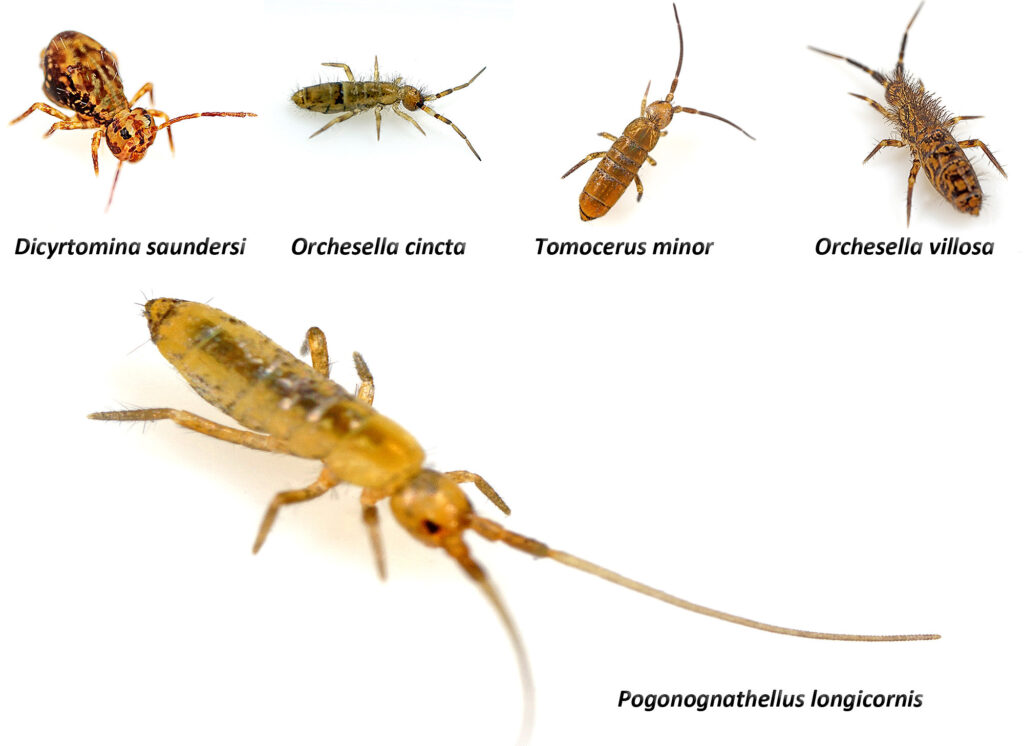
Different species of springtails—are noisy bugs off indoor plants, but their larvae damage plant roots. Photo Credit
These bugs are irritating when indoors and outdoors. However, their larvae cause significant damage to outdoor and indoor plants. Such as
- Fungus gnats
- Springtails
- Black ants
- Fruit flies
- Beetles
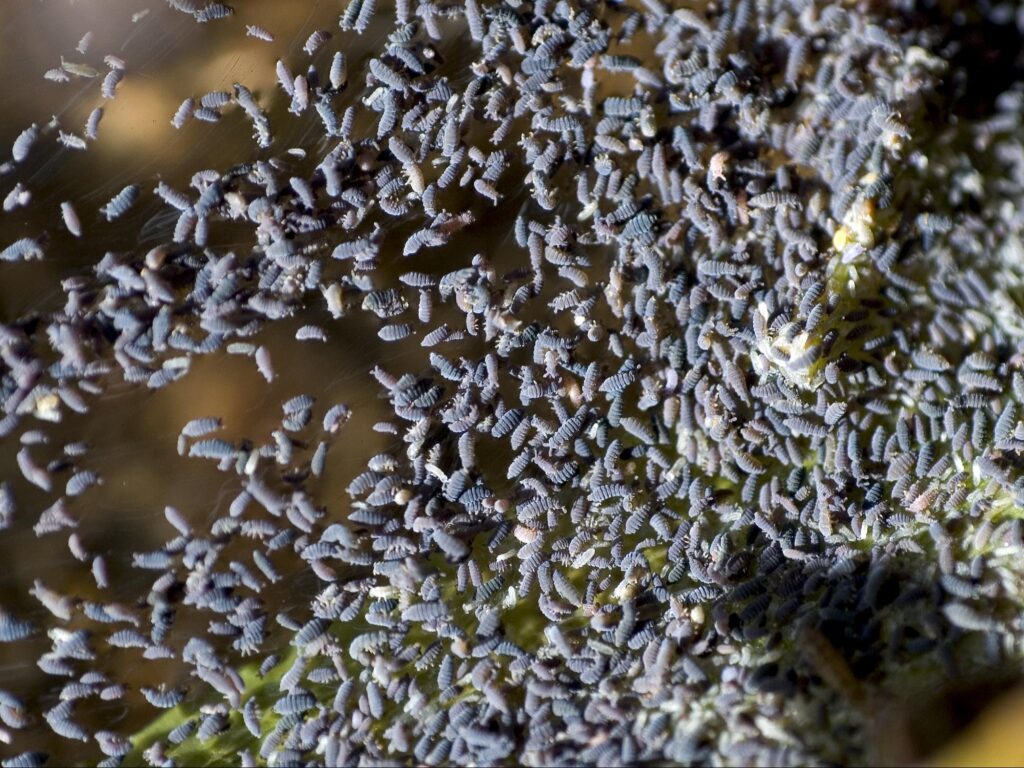
Party of springtails
What Causes Bugs On Outdoor & Indoor Plants?
Many factors are responsible for the infestation of bugs on indoor plants and outdoors. The sucking plant pests are more problematic indoors because they are so tiny and unable to get short notice. Moreover, they reproduce quickly. On the other hand, their control of outdoor spaces is quick. It is because they have plenty of natural enemies that feast on them.
The following list describes the various factors that are responsible for bugs indoor infestations:
Lack Of Natural Enemies
It is the most critical factor in the maintenance of indoor plant health. The lack of these natural enemies of plant pests in indoor environments leads to explosive growth in their populations, and they aggressively feed on the leaves of plants.
Try to establish healthy numbers of beneficial insects in interior spaces to get rid of bugs on indoor plants quickly.
Potting Soil
Soil is the primary source of food for plants. The plants can get infestations if the potting soil is contaminated with larvae and eggs of houseplant bugs. Always use fresh potting soil mix from a reputable garden store. Do not use garden soil as potting soil mix for indoor plants because it may have the larvae or eggs of plant pests.
Damp Soil
Wet potting soil attracts indoor plant bugs, especially the fungus gnats and springtails. In addition, the damp soil conditions act as ideal egg-laying sites for female fungus gnats. They reproduce quickly in these conditions and become very active and noisy in interior environments.
To avoid the houseplant bug infestations in indoor plants, always make sure the potting soil is dry between every watering.
Related: Potato Bug 101: Potato bug bites! And everything else that you’d like to know!
Poor Growth Conditions
Another critical factor that impacts the health of indoor plants and attracts bugs is poor growth conditions. For example, improper light, temperatures, and low or high humidity can create an environment that supports the growth and multiplication of houseplant bugs.
Furthermore, the poor growth conditions also negatively impact the plant’s health and make it more susceptible to pest infestation.
Stressed Plants
Improper growth conditions and overfeeding indoor plants with water and fertilizer make them more vulnerable to pest attacks. Therefore, it is essential to feed them properly and maintain good growth conditions to maintain healthy plants.
Identifying Most Common Indoor Plant Pests
Whiteflies
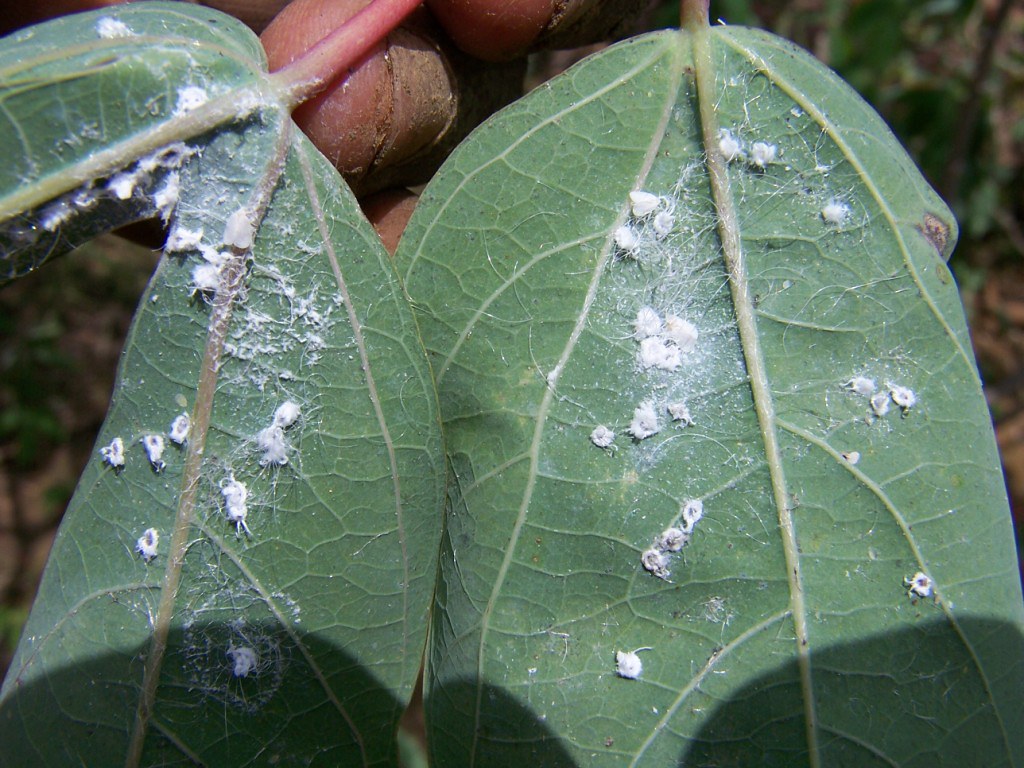
A group of whiteflies sucking out the nutrients on the underside of plant leaves
These pesky insects suck the life out of your favorite houseplants and go unnoticed due to their smaller size. However, the whiteflies are considered more damaging due to their higher reproduction rate and transmission of viral diseases.
The infected plant shows stunted growth with deformed and curled leaves. These tiny flies complete their life cycle within two to three weeks (warm, humid conditions) and can have many overlapping generations per plant.
Aphids
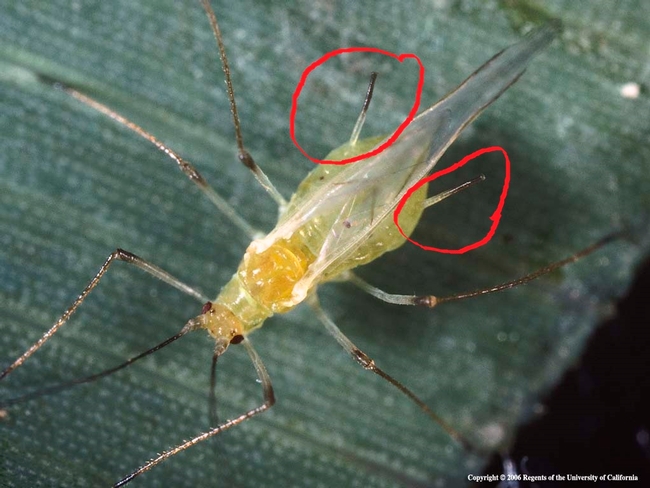
An adult and pregnant female aphid feeding on host plant juices
Another indoor plant pest and close relative of whiteflies is pear-shaped aphids. They have soft bodies with long legs and vary significantly in their body colors ranging from light green to pale, orange, and black.
Aphids also suck out host plant nutrients through their piercing-sucking mouthparts. They also transmit deadly plant viruses and feed on the underside of leaves. Their damage symptoms include stunted plant growth, yellowing and browning of leaves, and distorted and twisted foliage appearance.
Mealybugs
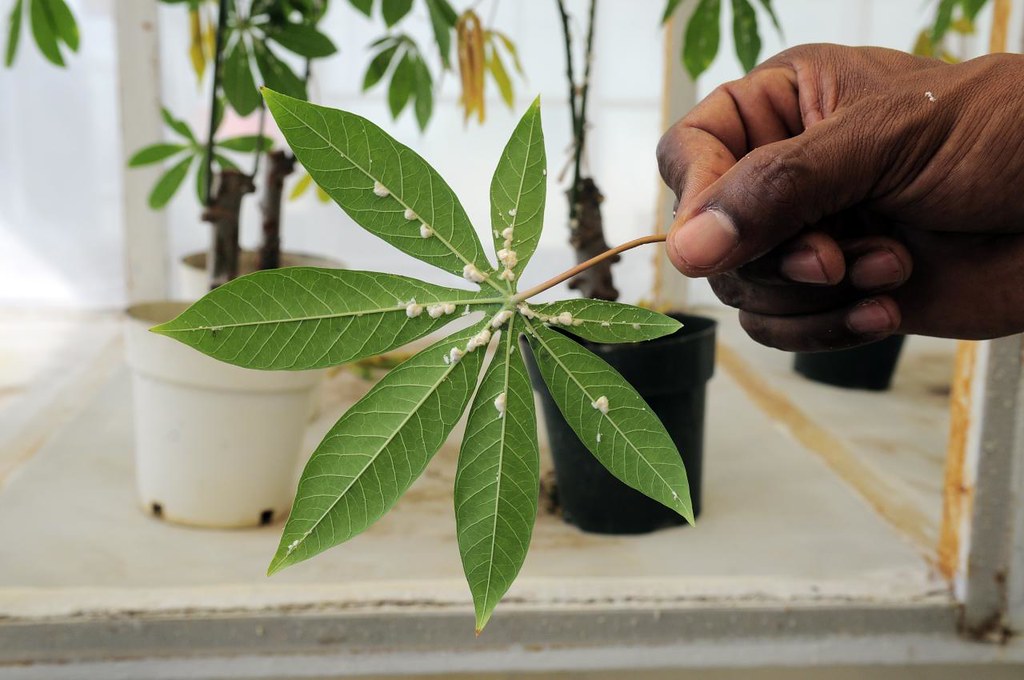
Mealybugs are sucking the life out of your favorite houseplants
Mealybugs feed in large groups once they establish their feeding sites. Like whiteflies and aphids, they suck plant pests and secrete honeydews that attract the sooty mold fungus. In addition, they suck nutrients from leaves, flower buds, and stems. Their feeding damage includes invasion of secondary pests, loss in fruit production, and loss of plant leaves permanently.
They appear as a white cottony mass on the leaves and secrete a hard protective body covering (wax cuticle).
Fungus Gnats

Fungus gnat infestations on a garden flower
Fungus gnats are annoying pests in indoor spaces, but they do not cause any damage to houseplants. However, their larvae are the ones that cause damage to old and new plants and make the situation evitable for pest control.
They feed on the young seedlings and root hairs. Unfortunately, their feeding exposes the plants to secondary pests such as root rot pathogens and wireworms.
Spider Mites
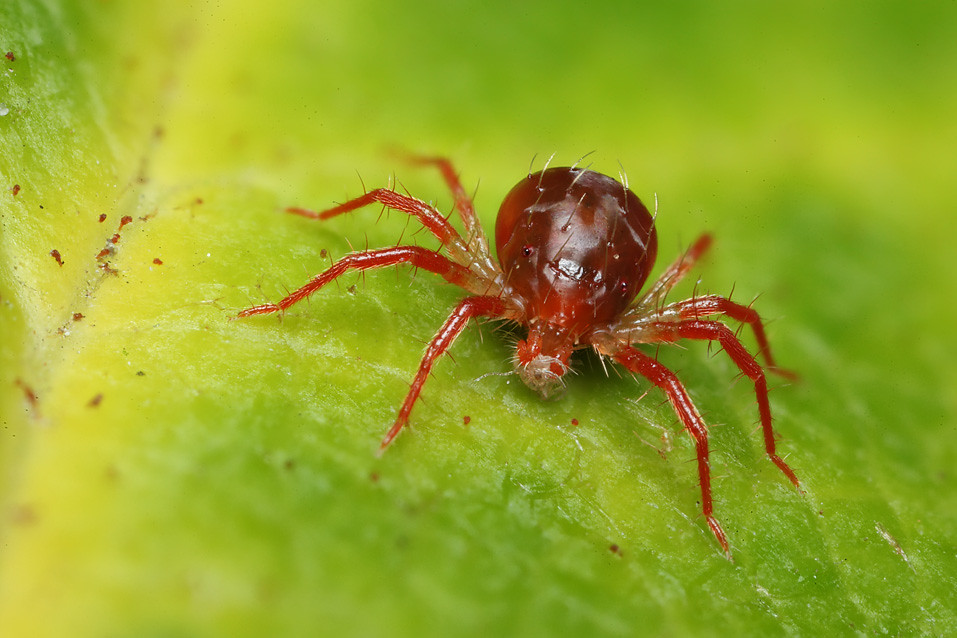
A close up of a red spider mite
These tiny red pests are hardly visible to the naked eye but leave delicate white webs on the underside of leaves and between stems.
Spider mites are most common in indoor plants due to ideal conditions for flourish. They prefer warm and dry weather conditions for their reproductive cycle. In case of these conditions, they reproduce quickly into significant numbers.
What Are The Best Treatments To Get Rid Of Bugs On Indoor Plants?
The following practices are the best to get rid of bugs on indoor and outdoor plants.
- Keep the plants in good and healthy conditions. Please provide them with accurate growth conditions such as good light, humidity, and temperatures, and do not overfeed them with nutrients.
- Maintain cleanliness around houseplants. Remove dead, fallen, and infected plant leaves; otherwise, the adult female uses these spaces for egg-laying and hiding from natural predators.
- Please do not use the garden soil for houseplants because it may contain the eggs of invasive beetle species.
- Use sterile plant soil mix or fresh soil to kill the hiding larvae and eggs of the plant pests. Also, use pots with drainage holes to draw out the excess water and discourage the damp soil conditions for fungus gnats and scale insects.
- Quarantine the newly purchased plants for at least two weeks and monitor them carefully against pest infestations. Then, shift them indoors.
- Prune off the heavily infested plant parts and properly discard them. Do not mix them with the compost pile.
Note: Before applying any treatments for houseplant bug control, identify the types of pests for effective management.
Spray Plants With The Chemicals That Suffocates The Common Houseplant Pests
Neem Oil
Neem oil is a broad-spectrum pesticide and effective against many pests. It kills insects, mites, and fungal pathogens. Moreover, it effectively controls the populations of whiteflies, aphids, mealybugs, scale insects, and spider mites.
To make a neem oil spray, we need
- Mix one and a half tablespoons of neem oil with one tablespoon of dish soap per one liter of water in a container.
- Mix all the ingredients thoroughly and pour them into a spray bottle.
- Use this spray against bugs or prevent plants from infestations once a week.
Insecticidal Soap
Insecticidal soap applications suffocate the damaging insects and help get rid of bugs. It is effective against mealybugs, scale insects, fruit flies, invasive beetles, and other indoor plant pests.
To make an insecticidal soap spray, we need
- Take one tablespoon of organic liquid soap per liter of water in a container.
- Mix all the ingredients thoroughly and pour them into a spray bottle.
- Apply this mixture whenever you spot a mealybug, whitefly, and aphid infestation on the indoor plant.
Vegetable Oil
Vegetable oil spray is effective in managing mealybugs, aphids, and whiteflies. It suffocates the insects and prevents plants from feeding damage.
To make a vegetable oil spray, we need
- Take one tablespoon of any vegetable oil and one liter of water.
- Add one tablespoon of dish soap into the mixture and shake it well.
- Pour the mixture into a spray bottle and apply to infected plant leaves.
- Make sure to fully cover the insect body and leaf surfaces for effective killing.
Related: White Fuzzy Jumping Bug on Plants: How to Get Rid of Them?
Use Food Grade Diatomaceous Earth
This fine white powder works wonderfully in the killing of houseplant bugs. It is abrasive and kills insects through contact. Sprinkle the diatomaceous earth on the dry soil of your houseplants to get rid of bugs.
Frequently Asked Questions (FAQs)
How Do You Make Homemade Bug Spray?
To make a homemade bug spray, we need the following ingredients.
- One tablespoon of organic neem oil and one liter of water in a container
- Add one tablespoon of liquid dish soap and mix all the ingredients thoroughly
- Pour into a spray bottle and spray bi-weekly on plants in the early morning or evening
While applying the homemade bug spray, cover the leaf surface fully.
Another recipe for homemade bug spray is vinegar and baking soda spray.
- Take one tablespoon of baking soda into a bowl
- Add one cup of vinegar and liquid dish soap
- One tablespoon of vegetable oil
- Add four cups of water
- Mix all the ingredients in a bowl and pour into a spray bottle for use against houseplant bugs
This homemade spray is effective against bugs, environment friendly, and cost-effective.
How Do I Know If My Plant has Mites?
The sign and symptoms of mite infestations are
- Stunted growth
- Curling and yellowing of leaves
- Twisted and deformed foliage with brown tips
- Fine webbing between the leaves and stems, particularly on the underside of leaves
- Falling of leaves which leads to wilting of infected plants
The best way to get rid of these tiny creatures is to wash them off by rubbing alcohol or using strong water streams.
Sources For Further Reading
- Scott, J. M., & Williamson, J. (2021, September 13). Common Houseplant Insects & Related Pests | Home & Garden Information Center. Home & Garden Information Center | Clemson University, South Carolina. Retrieved April 10, 2022, from https://hgic.clemson.edu/factsheet/common-houseplant-insects-related-pests/
- Townsend, L. (2019, July). Houseplant Insect Control | Entomology. University of Kentucky College of Agriculture. Retrieved April 10, 2022, from https://entomology.ca.uky.edu/ef406
- Vinje, E. (2018, May 16). How to Get Rid of Bugs Organically. Planet Natural. Retrieved April 10, 2022, from https://www.planetnatural.com/get-rid-of-bugs/
- How to get rid of bugs on your plant | Patch. (n.d.). Www.Patchplants.Com. Retrieved April 10, 2022, from https://www.patchplants.com/gb/en/care/houseplantbugs/
Now that you know how to get rid of bugs in plants, make sure to read our other articles:
Are Japanese Beetle Traps Helpful for Organic Pest Management?
Best Worms For Composting: Its Basics and Guide for Beginners!







